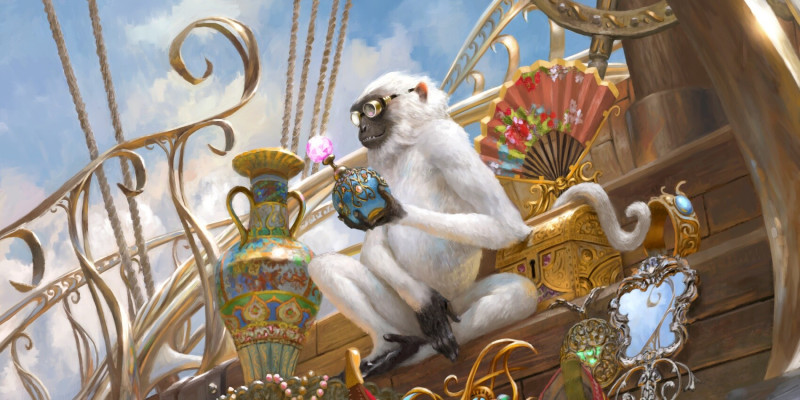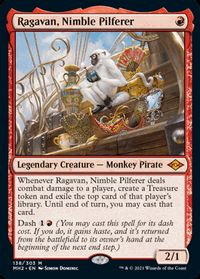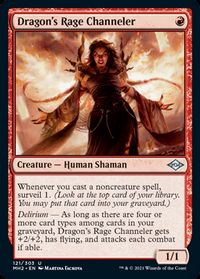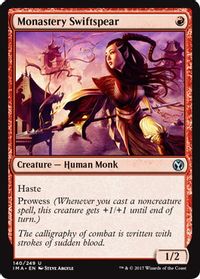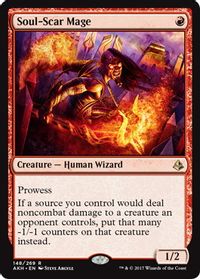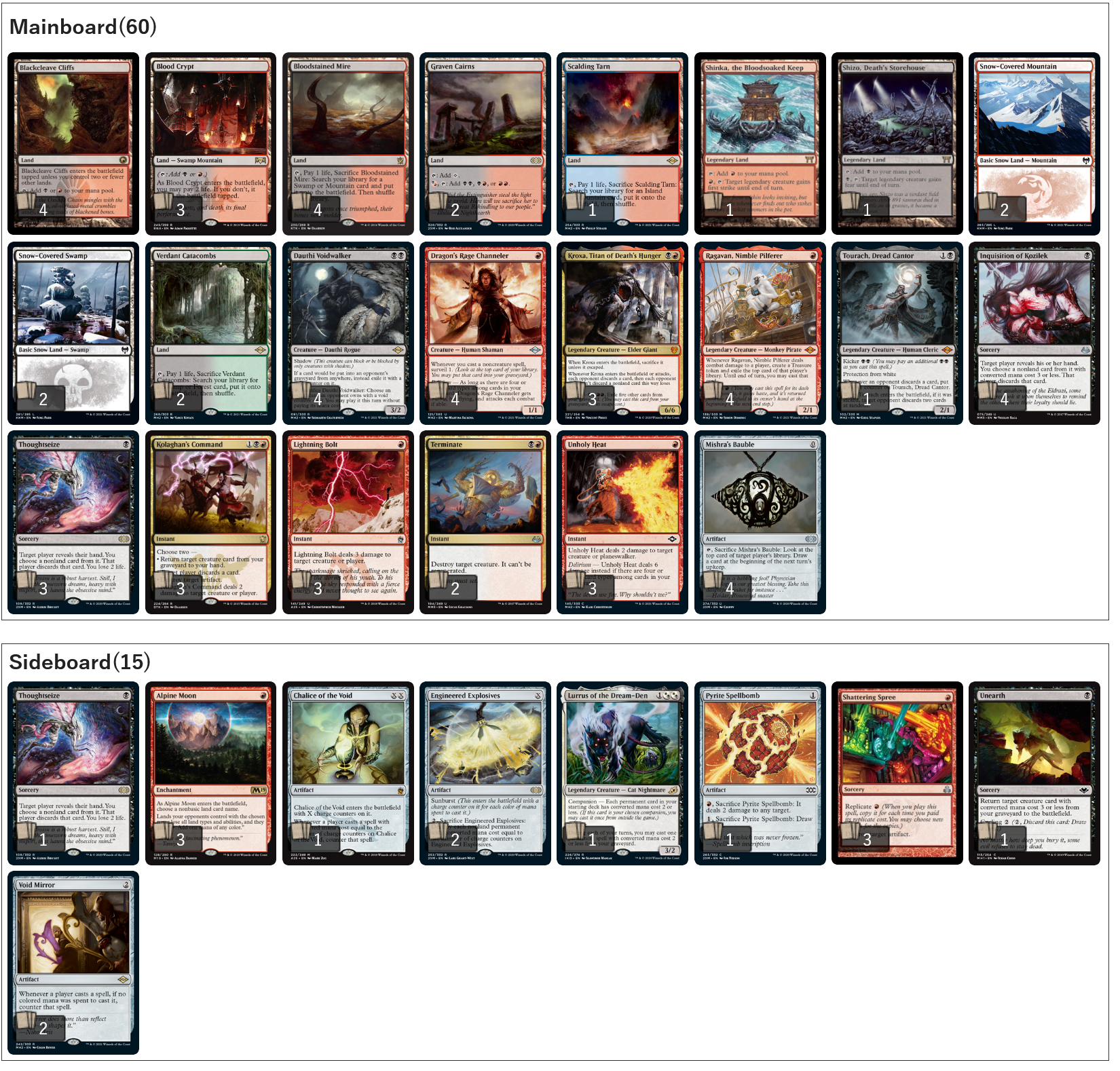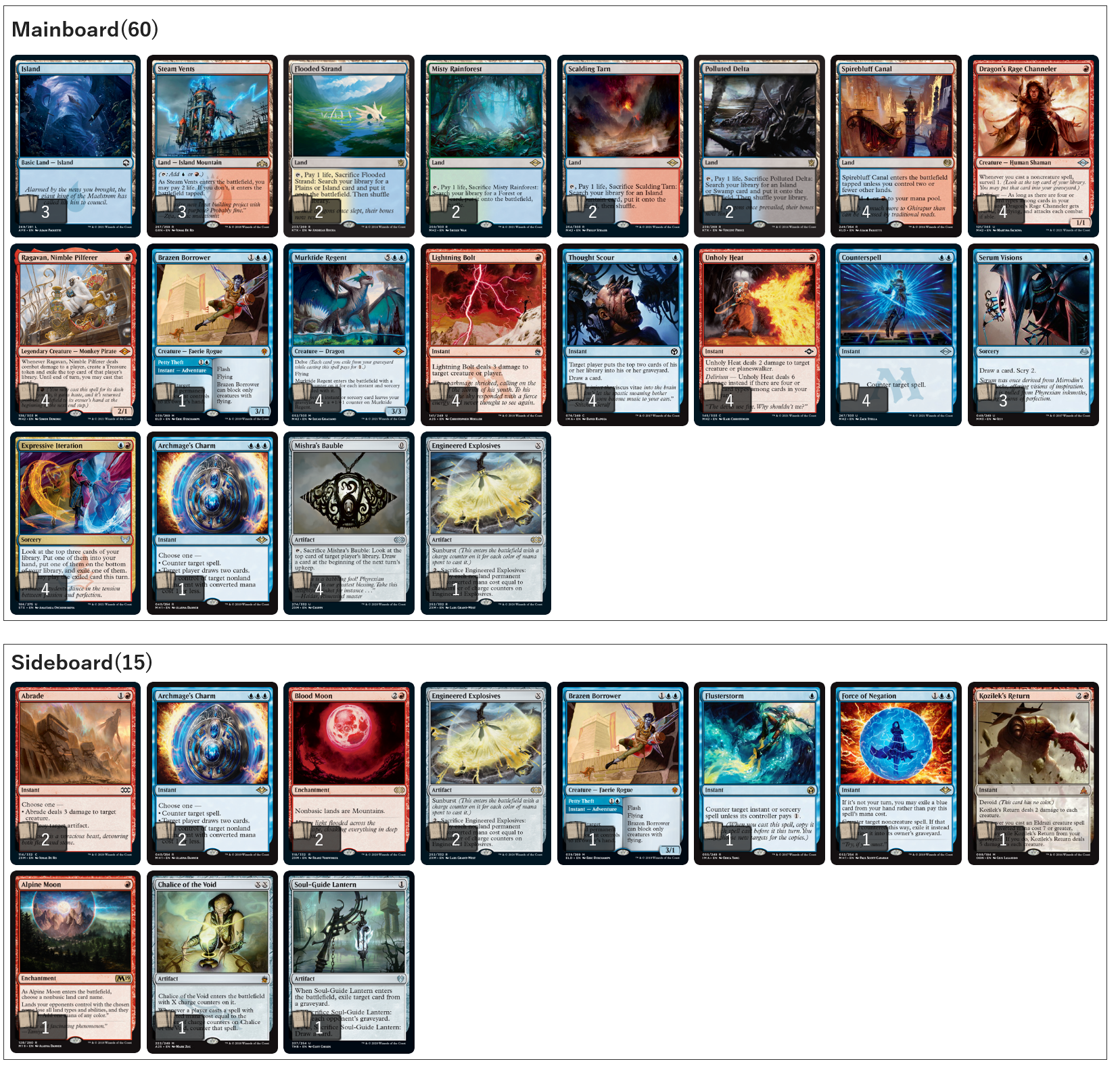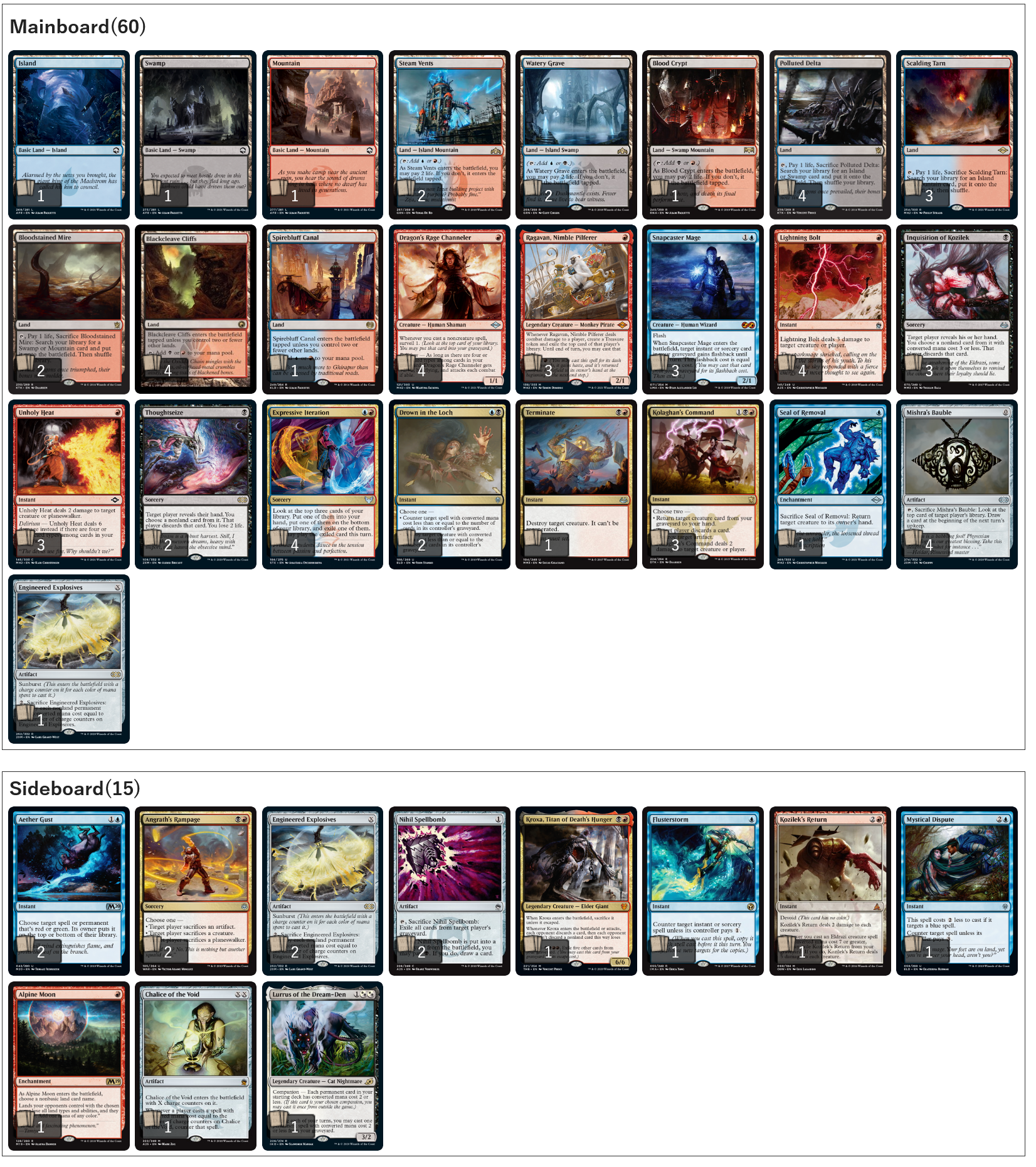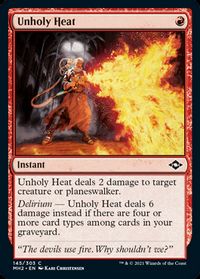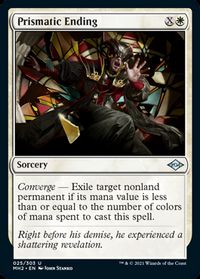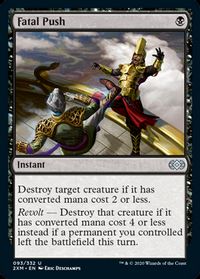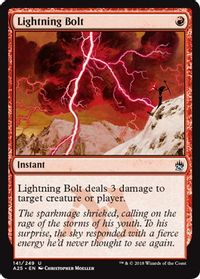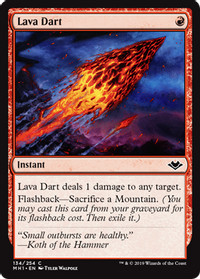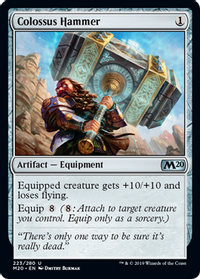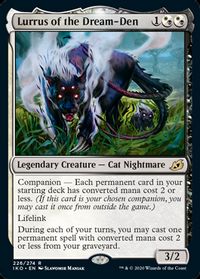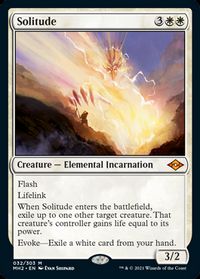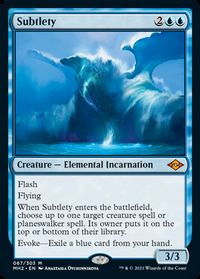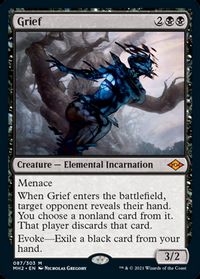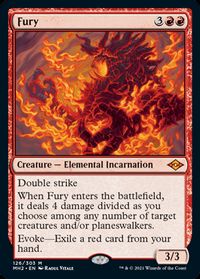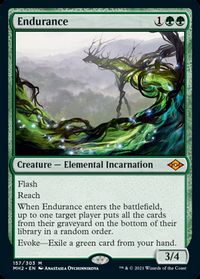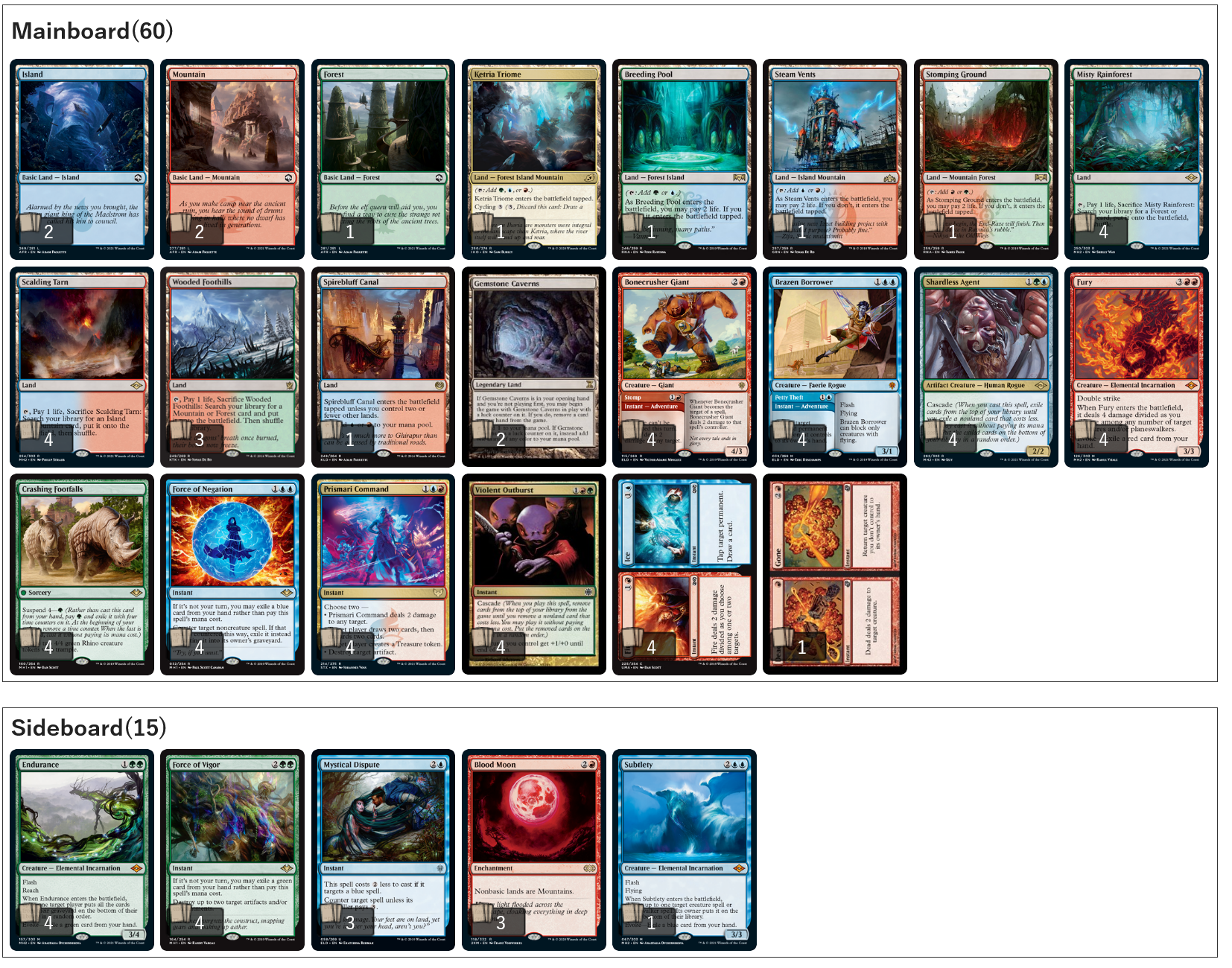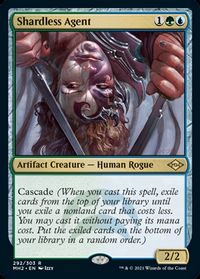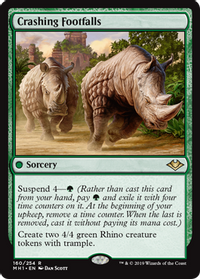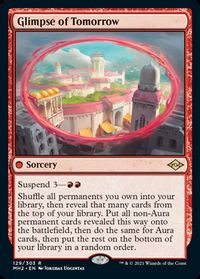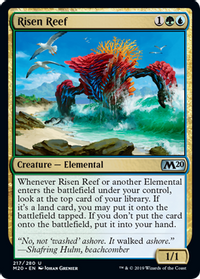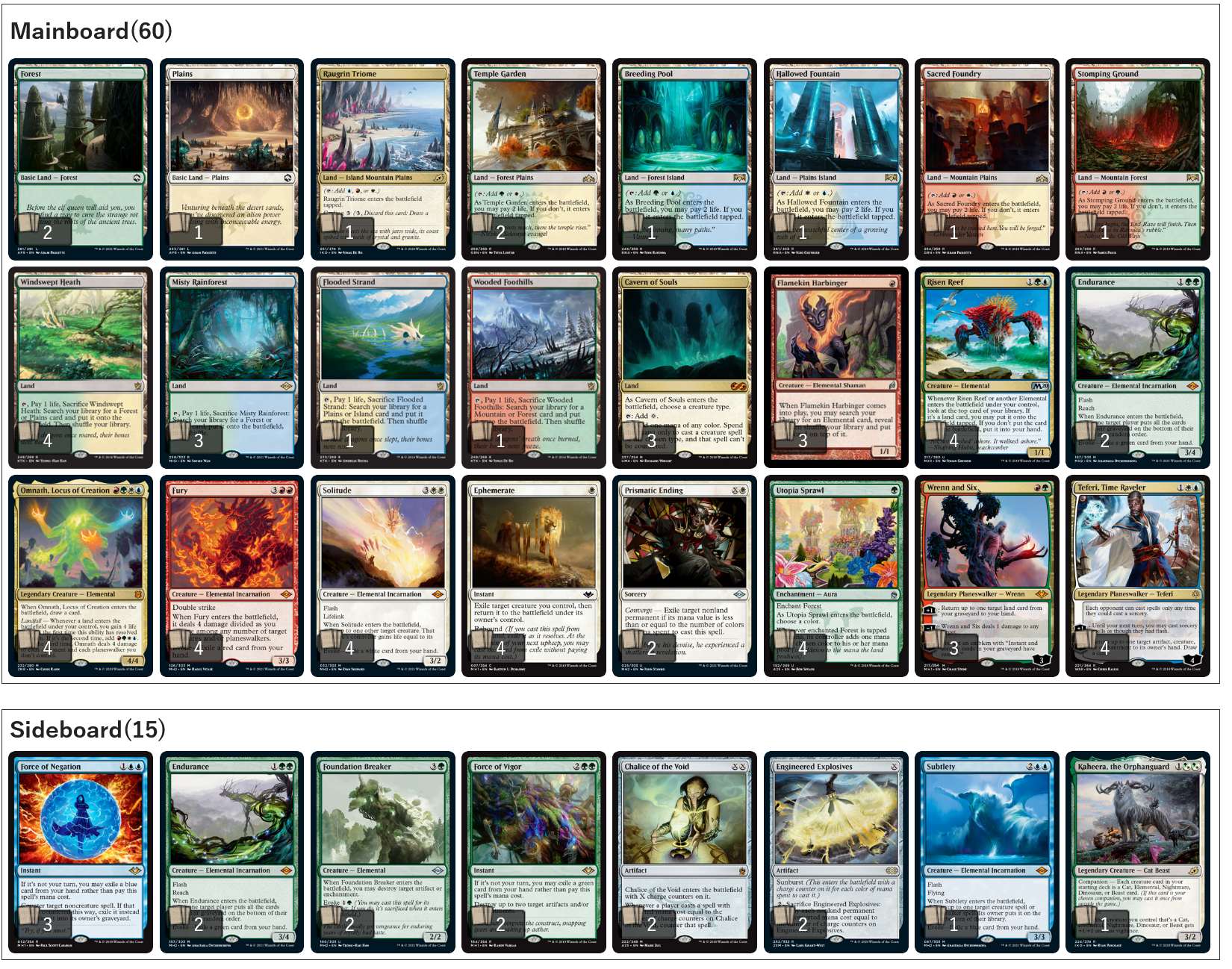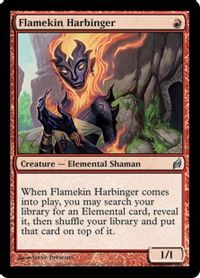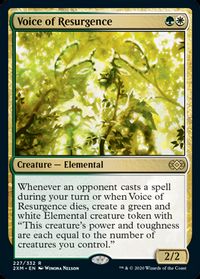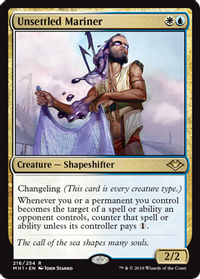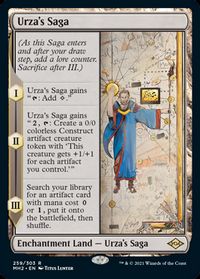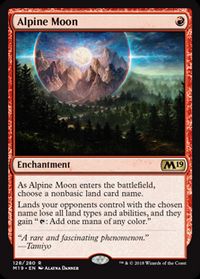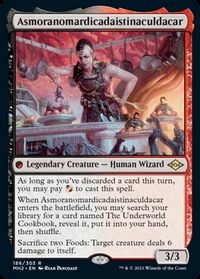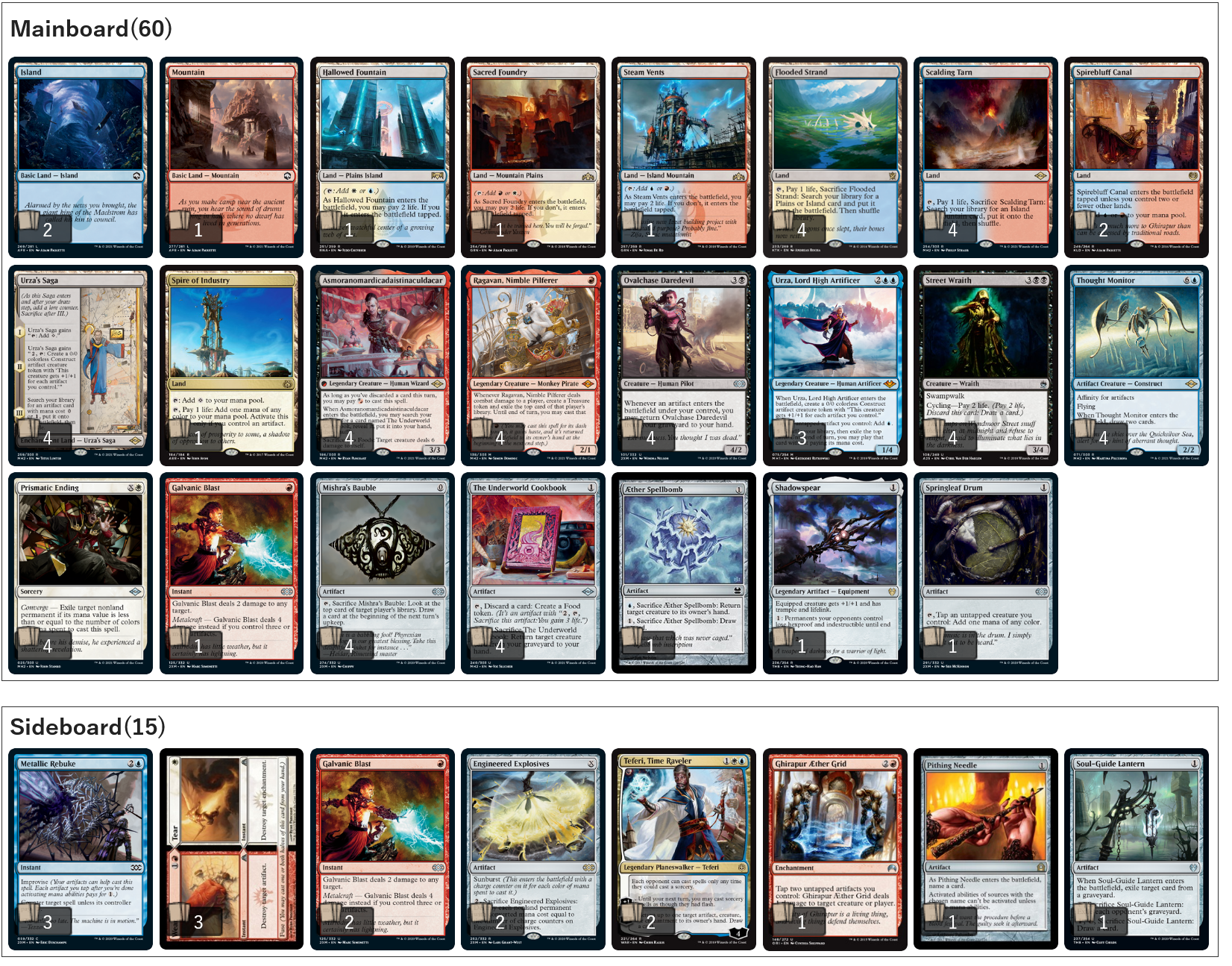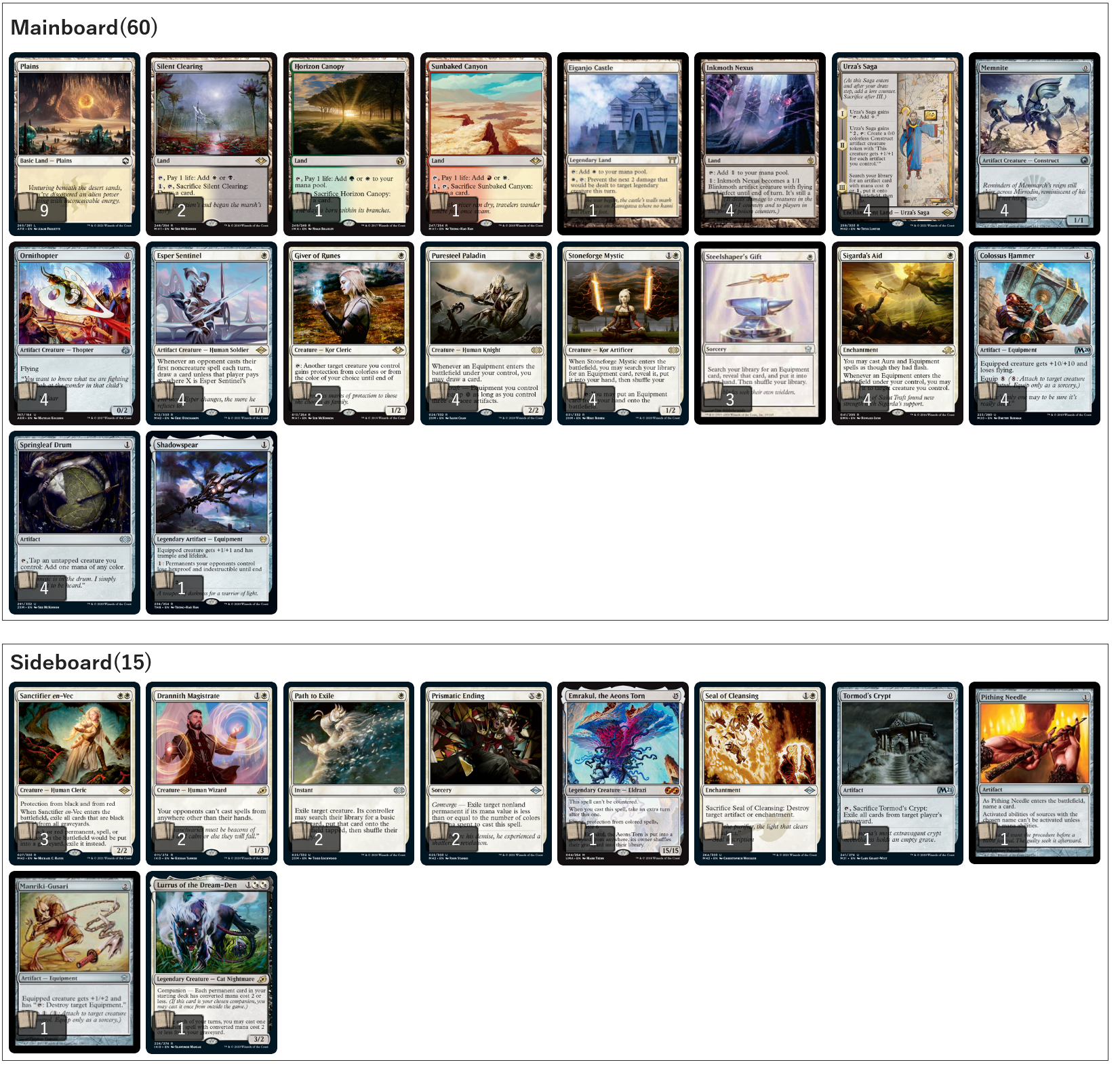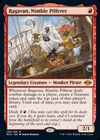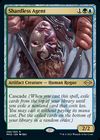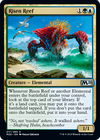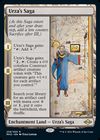Introduction
It’s been over a month and a half since the release of Modern Horizons 2. Adventures in the Forgotten Realms mostly had no effect on the format – one could even say it could easily be, well, easily forgotten – so we got to observe the metagame ripen and go through noticeable metagame cycles.
As players discover more tech and archetypes, it will continue to change, but it’s already clear that Modern Horizons 2 is a profoundly impactful set changing the basic rules of engagement. Let’s discuss those terms!
Efficiency
MH2 injected dozens of cards into the format. Horizons sets are a home for all the cards that wouldn’t make it there through Standard-legal printings, which largely includes very efficient threats and removal. Getting a slew of one (and zero!) mana cards all at the same time flips the format on its head; let’s go through the biggest cards in detail:
《Ragavan, Nimble Pilferer》 & 《Dragon’s Rage Channeler》
It used to be customary that to get a strong, midrange creature, one needed to pay two mana – 《Tarmogoyf》, 《Stoneforge Mystic》, 《Dark Confidant》. 《Ragavan, Nimble Pilferer》 and 《Dragon’s Rage Channeler》 are midrange-quality level threats that cost just a single red mana; weirdly enough, at the same time, they both are in the same color, meaning that red has become the go-to midrange color of the format.
I used the word “midrange” here because while 《Ragavan, Nimble Pilferer》 and 《Dragon’s Rage Channeler》 can lead to very aggressive draws, and they can slot into aggro decks, but they are not alike to 《Monastery Swiftspear》 and 《Soul-Scar Mage》. Prowess creatures are excellent clocks, but they need specific support – you need to cast multiple spells during your turn.
《Ragavan, Nimble Pilferer》 and 《Dragon’s Rage Channeler》 ask much less from you, and in fact, would prefer if you’d fill the rest of your deck with cheap interaction. 《Dragon’s Rage Channeler》 requires Delirium, but with 《Mishra’s Bauble》, it’s almost a given.
When your midrange deck can have started almost as aggressive as your aggro deck, presenting must-kill treats on turn one, the line between those two gets a little bit murky.
Generally, having a plan for the late-game and backing your threats with interaction is preferable. Decks like Tron that previously would take their 《Tarmogoyf》 matchups for granted, now have to grapple with the idea of potentially facing a turn one 《Ragavan, Nimble Pilferer》, or with 《Dragon’s Rage Channeler》 constant surveilling supplying its controller with seemingly unending countermagic.
Rakdos Lurrus
Izzet Midrange
Grixis Midrange
As of note, the Izzet archetype is commonly referred to as a “tempo” deck, but I believe it’s closer to the truth to refer to it as a Midrange deck, given how often it plays grindy games and how comfortable it is going long.
Given that Red Midrange decks just consist of the most efficient cards, decks that have a rough maindeck matchup against them will be virtually incapable of fixing their matchups after sideboarding, as it’s really hard to sideboard to fix an efficiency disparity.
For example, Amulet Titan matches up very poorly against Izzet’s interaction – should the Amulet player include ways to beat Counterspell? Does Graveyard hate to stop Delirium? Creature removal or blockers to fight off Izzet’s creatures? What about the looming threat of 《Blood Moon》 on top of everything else? There really is no good way to proceed. Post-MH2 midrange needs to be fought at a structural level.
The Removal Spells
MH2 not only changed the threat suites of fair decks but also their removal spells. As with 《Dragon’s Rage Channeler》, with 《Mishra’s Bauble》 it’s quite trivial to meet Delirium Criteria, and at that point 《Unholy Heat》 is very close to R: 《Hero’s Downfall》. 《Unholy Heat》 by itself deters me from registering 《Primeval Titan》 or 《Teferi, Hero of Dominaria》 in foreseeable future. Crazily, it’s in the same color as the hyperefficient one drop threats, further solidifying Red’s position as *the* midrange color.
《Prismatic Ending》 surprised me a little bit, but it became the go-to white removal spell, making 《Path to Exile》 a fringe player. Part of that is that Pathing a turn one 《Ragavan, Nimble Pilferer》 is almost suicidal; part of that is the flexibility of 《Prismatic Ending》, letting you answer any weird fringe permanents that you’d otherwise have to play through. Even despite being a sorcery speed removal, that card has already proven to be excellent.
Overall, we’ve seen quite a shift in played removal suites. 《Fatal Push》 is nowhere to be seen, 《Path to Exile》 is an uncommon sight; the two aforementioned MH2 removal spells are everywhere, as is 《Lightning Bolt》.
With prowess being partially pushed out by Red Midrange, 《Lava Dart》 is much less of a concern than it used to in the past. One-toughness creatures feel viable in Modern again; you’d think 《Ragavan, Nimble Pilferer》 would get severely punished by the 《Lava Dart》, but that seems not to be the case; that’s because the midrange decks get to sideboard out the monkey and assume the control role in the matchup for games 2&3. Mana dorks enjoy a little bit more presence too.
《Unholy Heat》 being capped at 6 damage, and 《Prismatic Ending》 realistically hitting up to mana value of 3 at sorcery speed hit a lot of cards, but do not form an inescapable grip. 《Murktide Regent》 is mainly played because it survives both of those cards; while Mono White Hammer benefits greatly from instant speed 《Colossus Hammer》, putting both damage-based removal and sorcery speed 《Prismatic Ending》 in an awkward spot.
That being said, while you can try to make cards line up in your favor, unlike with 《Fatal Push》 and 《Path to Exile》, it’s very hard to build creatureless, planeswalkers decks in Modern; and even if you’d do that, you’d need to go full-on no cheap permanents to dodge 《Prismatic Ending》. The traditional midrange problem of dead game one removal is not really a thing right now and I have found myself boarding out removal fairly rarely.
With one-mana threats and removal being so good, midrange nowadays needs a really good reason not to play 《Lurrus of the Dream-Den》. 《Ragavan, Nimble Pilferer》 incentivizes removal; removal drags out the game; then there is more time to pick up 《Lurrus of the Dream-Den》. More directly, 《Lurrus of the Dream-Den》 also gets better when the cards you replay with it are better.
Therefore, not many expensive permanents come close to competing with the free value of having a powerful companion available in each game. 《Murktide Regent》 + wrong colors is a reason not to play 《Lurrus of the Dream-Den》. 《Seasoned Pyromancer》, 《Liliana of the Veil》, 《Bloodbraid Elf》? Those cards, while powerful, I do not foresee being worth dropping the 《Lurrus of the Dream-Den》 anytime soon.
The Incarnations
We’ve got plenty of new one mana cards, but that’s not all – there’s also an entire cycle of zero mana ones.
Now, in a regular game of Magic, you can’t really expect to just spend two cards to 《Swords to Plowshares》 an opposing creature and be fine with it. These cards aren’t very well suited for regular gameplay; their effects – unlike, let’s say, 《Force of Will》 – are fairly narrow and specialized, so they don’t fit into your regular midrange deck, but can become very powerful with proper synergies.
Cascade Decks
Living End
Temur Cascade
Cascade decks became quite supercharged with MH2. First, 《Shardless Agent》 is an obvious upgrade over previously existing options, letting the cascade strategies stay within the Temur wedge. Second, they both can’t play cards of mana value 2 or less *and* are betting their entire gameplays on their namesake spells.
Living End makes great use of 《Grief》 – more free interaction, especially of the type that makes 《Living End》 easier to resolve, all while putting a creature card in your graveyard. I do find it adorable that a Temur deck is playing a black pitch card, but it does get to play a total of 16+ black cards without many sacrifices.
《Crashing Footfalls》 is a little bit less powerful of an effect than 《Living End》, but it doesn’t require you to spend time cycling and lets you surround your cascades with even more interaction. To those who play Vintage, I find Rhino gameplay to be remarkably similar to Hollowvine. I was previously reluctant to refer to Izzet decks as “tempo” decks, as I think the moniker to describe 《Crashing Footfalls》 much, much better. Rhino deck wins most often when it puts their opponent in a squeeze, gaining a huge mana advantage thanks to free spells.
Last weekend builds played 《Fury》, a previously uncommon card in the archetype, which I think is a great improvement. Spend 3 mana on 10 power, interact a few times to throw your opponent off-balance, win – simple yet effective plan.
There is also a third cascade combo deck – 《Glimpse of Tomorrow》. This one is a little bit hard to put your finger on, as while in a vacuum, it does have real upsides and downsides over the other two existing cascade decks, it’s barely playable on Magic Online. There is little data collected about this deck, making it hard for me to say anything decisive about it.
Before I move to the next way the Elemental Incarnations are abused, I’ll mention that in the case of Incarnations, you’ll frequently see them alongside lower amounts of pitchable cards than it is typically recommended in Legacy for 《Force of Will》, and that’s okay – the cards have a reasonable hardcast mode and you don’t necessarily need to cast them on the first turn of the game. Eventually, it will come together.
《Risen Reef》
《Risen Reef》 is a way to make use of Elemental Incarnations creature type.
Having a 《Risen Reef》 in play makes your Incarnations go card neutral; two 《Risen Reef》 generate card advantage. Elemental is a deck I worked on for a while on my stream before being discouraged by medium results; but after consulting decklists of some other online players, I arrived at a build I liked and managed to take down last weekend’s Sunday Modern Challenge.
4C Elementals
What I quickly realized was that I shouldn’t try to focus on the tribal aspect of the deck any more than it is necessary; what I failed to understand for a few weeks was that the bad cards weren’t 《Flamekin Harbinger》, but instead two-drop Elementals – 《Voice of Resurgence》 and 《Unsettled Mariner》.
While 《Flamekin Harbinger》 is almost card disadvantage by itself, it does serve a role – the deck is very centered around 《Risen Reef》 and needs it to kick into overdrive. 《Voice of Resurgence》 and 《Unsettled Mariner》 pitched to 《Solitude》, and that was about it; they rarely meaningfully contributed towards winning a game.
Elementals are still being figured out, but I believe a good version of it is going to have a place in Modern. Between eight removal evoke creatures and eight ways to bolster them, the deck is relatively consistent at finding some combination allowing to take board control.
It especially shines against decks that can’t interact with 《Risen Reef》 easily, such as Mono White Hammer. If the game goes long and 《Risen Reef》 get killed, Elementals would hope to keep hard casting its four and five mana cards and win this way.
Overall, you can’t pitch cards relentlessly, but building your deck in a way that takes advantage of the free spells available seems to be a beneficial strategy.
《Urza’s Saga》
I wrote an entire article about this card a month ago, and while back then it seemed unbeatable, things have changed.
《Alpine Moon》 got discovered as a hyper-efficient sideboard card against the decks playing 《Urza’s Saga》; because it kills the 《Urza’s Saga》 that’s already in play, the 《Alpine Moon》 player comes out on top in that exchange. The mere suspicion that your opponent might be holding an 《Alpine Moon》 makes the prospect of deploying a 《Urza’s Saga》 terrifying.
Besides that, it turned out that the synergies in 《Asmoranomardicadaistinaculdacar》 decks are attackable, and having to play a playset of 《Ovalchase Daredevil》 for the fool 《The Underworld Cookbook》 synergy is really bad whenever you draw more or less than exactly one.
That being said, blue-based 《Asmoranomardicadaistinaculdacar》 decks are not dead, but they are definitely not at the top of the format anymore. Obviously, players are still experimenting, and it’s possible that different builds arise in the future.
Urza Asmo
One recent development we see is splashing white for 《Prismatic Ending》, allowing for easier interaction with problematic permanents like 《Pithing Needle》 or 《Alpine Moon》, and while I see that as an excellent addition to the deck, I am not convinced that the deck’s manabase is ready to pay that price.
Uncomfortably, there are very few ways of utilizing 《Urza’s Saga》‘s colorless mana, so it sometimes won’t even behave like land at all. Maybe a future build focusing more on 《Springleaf Drum》 could help alleviate that problem?
One thing worth noting is, those 《Asmoranomardicadaistinaculdacar》 decks are shockingly cheap, mana-wise. 《Street Wraith》 and 《Ovalchase Daredevil》 disguise that a little bit, but from amongst the actually castable cards, all of them besides Urza can be cast for just one mana.
Mono White Hammer
For a brief period touted by many players to be the best deck in the format, I am a doubter of this claim. I do respect the Hammer deck a lot, and I think it’s a great aggressive deck, capable of playing easily through a small amount of removal and putting your opponent in a rough spot, although with some weaknesses to decks like Elementals or Izzet Murktide decks that prepare with a lot of 《Engineered Explosives》 and 《Abrade》.
It is however a deck you need to have a plan against, ideally one involving some kind of a proactive approach backed up by removal.
Conclusion
Those are the decks that I consider to be the amongst best currently in Modern – with Elementals being still a little bit of a question mark and 《Asmoranomardicadaistinaculdacar》 builds being a little bit behind the rest, but still with a lot of potential for new developments.
All of those decks share a quality – they are chock-full of one and zero mana cards. The name of the game is efficiency. The pool of decks in modern is deep – there’s plenty of decks that can claim to be positioned well for a given weekend, be it Mill, Heliod Company, Amulet Titan, or any kind of Tron, but they don’t have the same qualities that make the decks look structurally appealing to me.
As always, I’m excited to see where the format will go from there and how it will evolve. In the meantime, stay strong and until next time!


